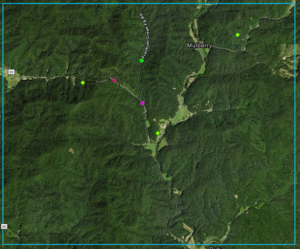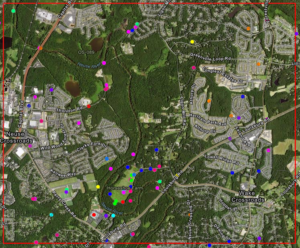We’ve just begun our third breeding season in the NC Bird Atlas with 121,129 checklists in! It’s a time for taking stock, evaluating where we are, and making course adjustments as we head towards our final three breeding seasons. So today, we’re releasing new guidelines for completing a priority block.
One of the defining features of any bird atlas are priority blocks – 937 imaginary 10 mi2 rectangles designed to spread out effort across the state, rather than the typical concentration near cities. Currently, 94% of our blocks have data, but only 12 are considered complete, and spreading out our birding effort will ensure the best results.
Why Priority Blocks?
By dividing the state into priority blocks, we have a good representation of the fields, forests, and cities that define the North Carolina landscape. In total, priority blocks cover 1/6 of the area of North Carolina (9,481 mi2), and if every priority block has enough coverage, we’ll have the most detailed map of bird distribution ever compiled for our state.


Two example Priority Blocks, showing the diversity of habitats encompassed. On the left is Globe SE, an incomplete block in Caldwell County. On the right is Wake Forest SE, a completed block in Wake County.
What does it mean to be “Complete”?
The following guidelines give us confidence that the observations you all have made represent the birds within the block. Combining bird behavior observations, time spent in the block, and number of total species observed, we can be sure that if all criteria are met, it is safe to move along to bird in another block.
During breeding, we’ve added some guidance for how many species to expect to be coded in a block and adjusted expectations on how many may be observed as confirmed or probable breeders.
You can find the full updated guidelines below and on our website.
Breeding Season (new items in bold):
- Minimum of 55 species coded
- Min 25% coded species confirmed, max 25% coded species possible
- Minimum of 3 visits and 20 hours of birding
- Nocturnal (preferred at least 1 visit)
Wintering Season:
- Minimum of 55 species observed
- Minimum 2 visits and 5 hours of birding
- Checklists in all habitat types
- Nocturnal (preferred at least 1 visit) [formally required]
As always, we encourage participation in the atlas at whatever level you choose. Whether you are keen on completing a block or just casually birding, every observation counts!



